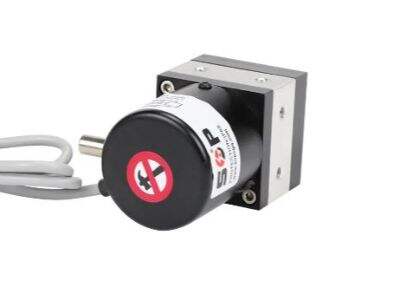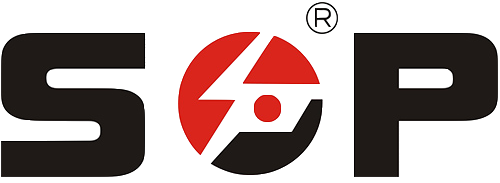How Draw Wire Sensors Can Help You Make Smart Choices
In light of the recent technological enhancements, the demands for precise counting sensors are equally evident. The most sophisticated sensor in the present day has to be the Draw Wire Sensor. It has a powerful working principle that makes it work with various operators like in the field of robotics, automation, and machine tracking. It is a measuring safe sensor to use, can be easily operated whether you are a beginner or an expert, and of course, is of high quality. In this article within SOP are described the benefits of the DRAW WIRE SENSOR, how to choose it and how to apply it.

Advantages of Draw Wire Sensors
It has numerous benefits all round, with one of the biggest being the reliability of a Draw Wire Sensor by SOP. It can give accurate possible data to be measured in adverse circumstances and at low or high temperatures. This is due to its external rigidity and internal flexibility of that tool used to measure angular displacement. Another advantage is it is very stable and thus you can expect the kind of outcomes that you will get with no compromise from the stability of the environment.
The second benefit is that it is a more general strategy than Myers, and Myers’ lack of relevance for certain types of academic inquiry leads to inefficiency in terms of time and human resources. Some areas where a Draw Wire Sensor is useful include the measurement of; – Hydraulic cylinder position – Position of gantry crane – Position of an elevator. The measurement range can also be set uniquely according to the specific requirements of the particular application.
Draw Wire Sensors are also not very difficult when it comes to usage and installation. Many models of these antennas come with mounting brackets and user manuals to help you with the installation and usage of the equipment. They are also adaptable to other systems and equipment for example, PLC’s as well as computers.
Innovation in Draw Wire Sensors
They have improved their range, accuracy and resolution and the newest draw wire sensors are even in bigger sizes. This is because of several emergent technologies for instance Laser triangulation, Micro Processors and Wireless connectivity. Added functions like multiple output, auto self-calibrating, and digital representation enhanced the usage of these sensors.
Safety and Service
Draw Wire Sensors have a safety feature, another very obvious advantage of these sensors. These devices lack parts that may break or cause accidents and they are not connected to any source of electricity, which makes them safe to use. This also implies that they have simple and modest designs in order to accommodate minimum maintenance and therefore reducing service costs. Luckily, most 10-100000mm Pull Rope Draw Wire Displacement Sensor WPS-S have a warranty for the times that they may not work as expected, so the consumers do not need to worry much about this issue.
Quality and Application
There are numerous factors when it comes to the need to purchase a Draw Wire Sensor and quality must not be overlooked. The high accuracy of the sensors is important in constant and precise measurements of the parameters. You should also try to find sensors that will conform to the standard or the regulation of your industry so that you will know that getting the sensors are safe and most of all, it is reliable.
An important point that has to do with Draw Wire Sensors is the area of use. You should think about the context at which you will be applying them and the requirements in terms of measurements. This will guide you on which sensor to use depending on your requirement. For instance if you are using 10-100000mm Pull Rope Draw Wire Displacement Sensor WPS-XL in a contaminated zone with dust or dirt, you can prefer a model of Sensor that has a closed casing so that it would not allow dust to interfere with the input measurements.
How to Use A Draw Wire Sensor
With regards to the ease of Use and installation, a Draw Wire Sensor is very easy to use but needs to be configured and installed. Here are a few steps to help you get started:Here are a few steps to help you get started:
1. Mount the sensor: Place the sensor in the position that corresponds to the target object you are trying to quantify. Namely, mounting brackets or plates are usually provided as a part of Draw Wire Sensors.
2. Connect the sensor: In this case, you need to give the sensor to your measuring tool or device. Some possible employed connections include the analog or digital kinds.
3. Calibrate the sensor: Follow the Multi Sensor System manufacturer’s instructions on how to calibrate the sensor before use. This ensures that readings taken by the sensor are correct and in proportion to their actual physical dimensions.
4. Test the sensor: Finally, explore and check the functionality of the sensor being used. This could be done by actually translating the position of the object to the sensor output to observe the result.
 EN
EN
 AR
AR HR
HR CS
CS DA
DA FI
FI FR
FR DE
DE EL
EL HI
HI IT
IT JA
JA NO
NO PL
PL PT
PT RO
RO RU
RU ES
ES SV
SV IW
IW ID
ID LV
LV LT
LT SR
SR SK
SK SL
SL UK
UK VI
VI ET
ET HU
HU TH
TH TR
TR FA
FA AF
AF KA
KA UR
UR BN
BN